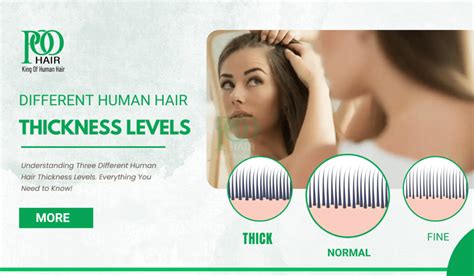In the realm of beauty and personal care, hair plays a pivotal role in shaping our overall appearance and self-confidence. From luscious, flowing locks to sleek, sophisticated bobs, the thickness of our hair contributes significantly to its visual appeal and overall health.

Defining Headful and Handful Hair
To understand the distinction between headful and handful hair, we must first define these terms in the context of hair science.
Headful hair: Also known as voluminous hair, headful hair is characterized by a high density of hair follicles on the scalp. This results in a full, luxuriant appearance with ample hair coverage.
Handful hair: On the other hand, handful hair is characterized by a lower density of hair follicles, leading to a thinner and flatter appearance with less hair coverage.
Determining Hair Thickness
The thickness of hair is measured by the diameter of the individual hair shaft. According to the American Academy of Dermatology (AAD), the average hair shaft diameter ranges from 50 to 100 micrometers.
Hair thickness can vary significantly from person to person and is influenced by genetic factors, hormonal fluctuations, and environmental conditions. Certain ethnicities, such as Asians and Native Americans, tend to have thicker hair, while Europeans and Africans typically have thinner hair.
Factors Affecting Hair Thickness
Numerous factors can impact hair thickness, including:
-
Genetics: Inherited hair follicle characteristics, such as size and shape, play a substantial role in determining hair thickness.
-
Hormonal changes: Androgens, such as testosterone, can stimulate hair growth and increase hair shaft diameter.
-
Nutritional deficiencies: Vitamins and minerals, such as iron, zinc, and vitamin B12, are essential for maintaining healthy hair growth and thickness.
-
Environmental factors: Sun exposure, pollution, and excessive heat can damage hair, leading to thinning and breakage.
-
Age: As we age, hair follicles naturally shrink and produce thinner hair.
Hair Thickness and Appearance
The thickness of hair has a profound impact on its appearance and overall effect on one’s style:
-
Voluminous and Bountiful: Headful hair appears full, bouncy, and lustrous. It is often associated with youthfulness, vitality, and confidence.
-
Fine and Flat: Handful hair tends to be more delicate and prone to breakage. It lacks volume and may appear limp or lifeless.
Hair Thickness and Health
Hair thickness can also provide insights into overall health and potential health concerns:
-
Thicker hair: In certain cases, thicker hair can indicate good overall health and adequate nutrient intake.
-
Thinner hair: Thinning hair or a sudden loss of hair thickness can be a sign of underlying health conditions, such as hormonal imbalances, autoimmune diseases, or nutritional deficiencies.
Managing Handful Hair: Enhancing Volume and Thickness
For individuals struggling with handful hair, various strategies can be employed to enhance volume and thickness:
– Hair Thickening Shampoos and Conditioners: Formulated with volumizing ingredients, these products can temporarily add fullness and texture to hair.
– Hair Volumizing Products: Mousses, sprays, and dry shampoos can provide an immediate boost in volume, creating the illusion of thicker hair.
– Hair Extensions: Semi-permanent or permanent hair extensions can add instant length and volume to hair, creating a more headful appearance.
– Scalp Treatments: Medicated shampoos and topical solutions can help combat hair loss and stimulate new hair growth.
Conclusion
Understanding the difference between headful and handful hair is essential for individuals seeking to enhance their hair’s appearance and overall health. By identifying the causes of hair thinning and exploring effective management strategies, it is possible to achieve a more voluminous and satisfying head of hair. Remember, hair thickness is a natural variation influenced by various factors, and embracing your individual hair type can lead to greater self-acceptance and confidence.
